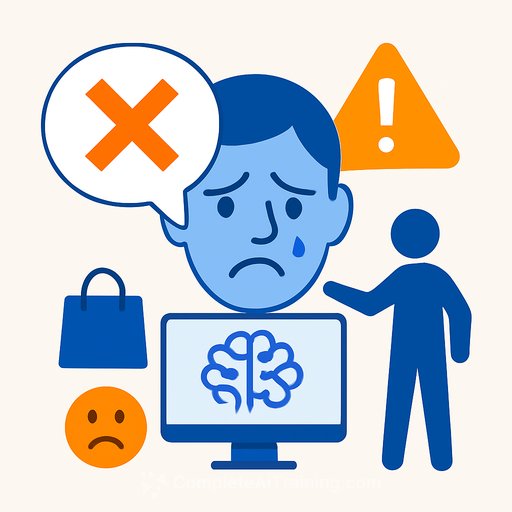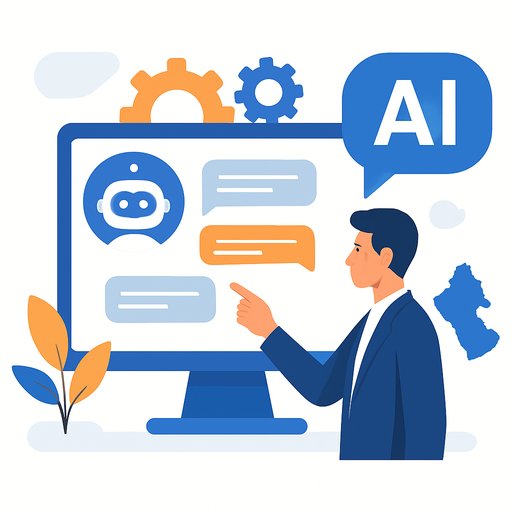Generative AI Will Break Customer Trust for a Third of Brands, Forrester Warns
If you're counting on generative AI to fix your customer experience in 2026, slow down. Forrester's latest predictions say one-third of companies will damage trust by pushing genAI self-service that can't handle real problems. That's not an efficiency gain. That's brand erosion.
This article breaks down the key calls from Forrester's 2026 B2C Marketing, CX, and Digital Business Predictions and what support, marketing, and digital leaders should do now to avoid costly mistakes.
Short on time? Jump to:
- What's new in Forrester's 2026 forecast
- AI will frustrate users and fuel lawsuits
- Marketers face a shrinking open web
- What marketers should do next
- The future of marketing: AI transformations by 2026
What's new in Forrester's 2026 forecast
- One-third of companies will deploy customer-facing genAI that frustrates users and erodes trust
- US privacy-driven class-action lawsuits will rise 20%, targeting misuse of AI and personal data
- Display ad budgets will shrink by 30% as audiences spend less time on the open web
- Over one-third of consumers will actively choose offline experiences
- Brands that fail to deliver relevance and value will struggle to retain customers
As Forrester's Chief Research Officer Sharyn Leaver puts it, "In 2026, trust and value will be the guiding beacons. Superficial efforts won't cut it anymore."
For a broader view of the firm's predictions, see Forrester's predictions hub here.
AI will frustrate users and fuel lawsuits
Many teams feel pressure to cut costs, so they ship genAI chatbots and virtual agents before they're ready. Customers hit a wall. The bot loops, hallucinates, or deflects. Trust drops fast-and it's hard to earn back.
Legal risk is climbing too. Forrester expects a 20% jump in US class-action suits as attention moves from tracking pixels to AI misuse. The focus: how systems handle personal data, what's disclosed, and who's accountable. Privacy isn't a checkbox. It's a design choice.
If you need a reference point for best practices and regulatory updates, check the International Association of Privacy Professionals IAPP.
Marketers face a shrinking open web
People are changing how they discover and consume content. AI summaries and assistants cut out the click. That means fewer site visits, thinner data, and weaker signals.
- Lower click-through rates across the open web
- Fewer impressions and less first-party context
- Display budgets shift down 30% as spend moves to CTV, streaming audio, and short-form video
The takeaway: stop optimizing for empty impressions. Build for channels that earn attention and deliver context, not just reach.
What marketers should do next
- 1) Battle-test AI before rollout.
Validate in high-friction scenarios: complex returns, billing disputes, sensitive account issues. If the system breaks in the moment that matters, trust breaks with it. Run red-team tests, escalation drills, and human-in-the-loop reviews. - 2) Prioritize relevance over automation.
Generic answers feel cheap. Tie AI outputs to intent, history, and outcome. Set guardrails: no canned apologies on critical tickets, no upsell scripts during active complaints, and clear handoffs to humans. - 3) Get ahead of privacy.
Map data flows, retention, and model access. Disclose clearly what's collected and why. Log prompts, decisions, and overrides for audit. Bake consent and suppression logic into your orchestration, not a footer. - 4) Rethink your ad mix.
Expect less from the open web. Shift budget to channels with time-spent and narrative: CTV, podcasts, creator-driven short video. Build measurement that proves incrementality, not just last-click. - 5) Add offline to stay connected.
Over a third of consumers will choose in-person experiences. Use stores, events, and pop-ups to create memory and community. Tie them to your CRM so the value shows up in your data, not just your photos. - 6) Equip your team.
Set standards for prompt design, QA, escalation, and privacy by default. If you're formalizing upskilling, explore role-based AI learning paths for marketers and CX pros here and marketing-focused certifications here.
The future of marketing: AI transformations by 2026
AI will sit in every workflow, but customers will judge you on one thing: did it help? Deploying genAI without a plan invites clunky interactions, privacy headaches, and lost loyalty.
The play is simple, not easy: ship smaller, test harder, disclose more. Let humans handle the edge cases. Measure outcomes, not automation rate. Trust is the product-and the brands that respect it will win the long game.
Your membership also unlocks:









